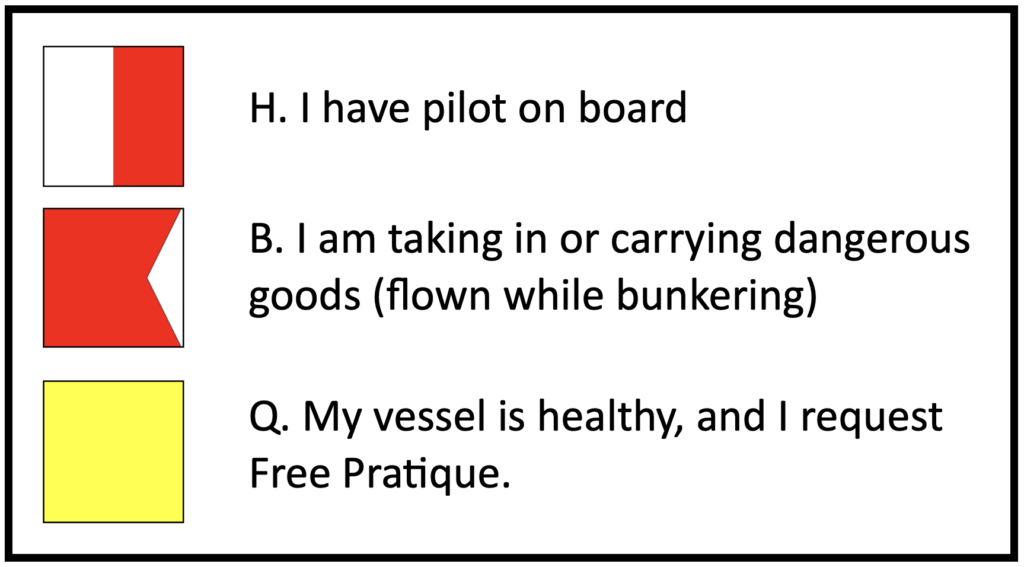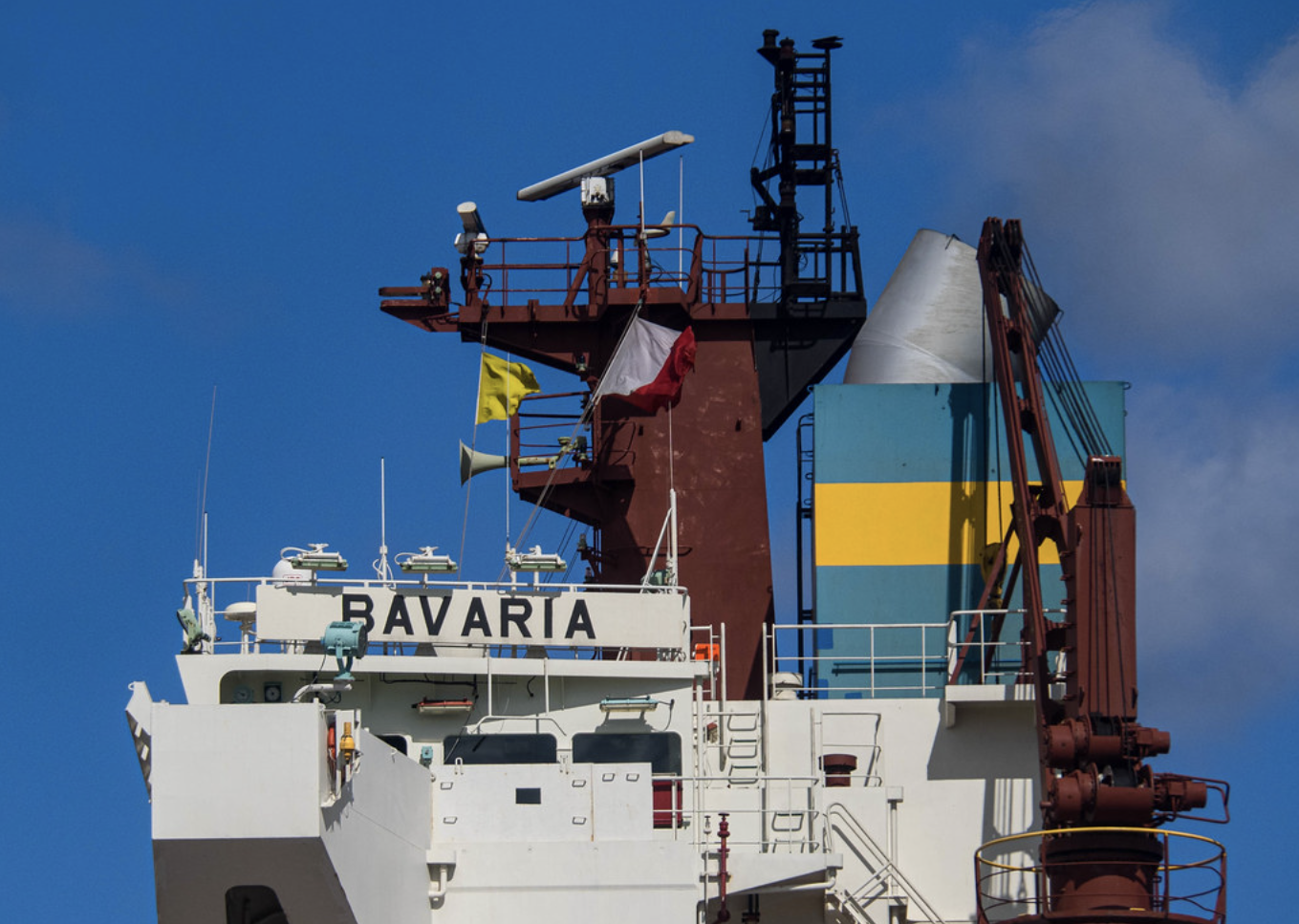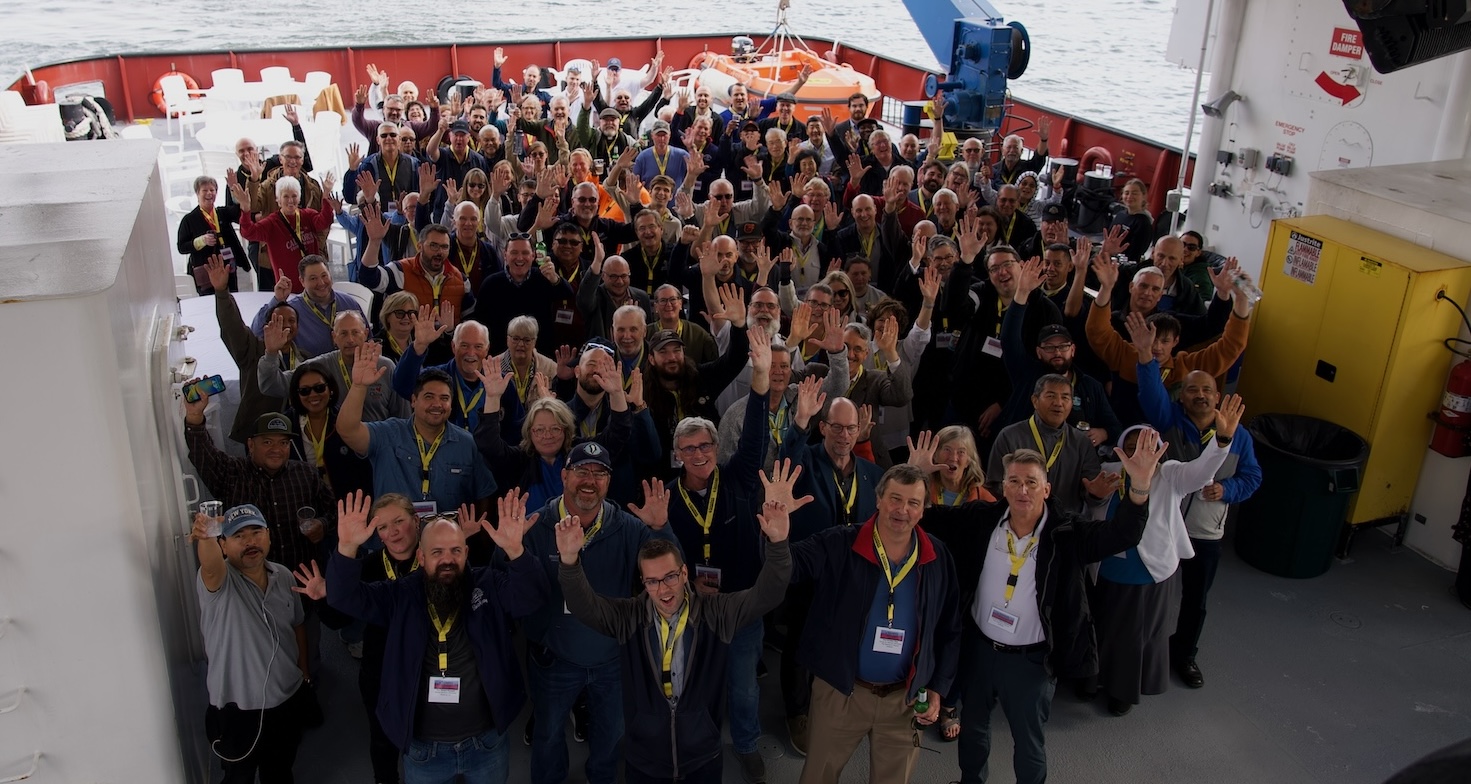by David Reid, FNI
Few people probably notice that when ships enter the port of a country having come inwards on an international voyage, they fly the yellow “Q” flag on the mast above the navigating bridge. There are a set of flags onboard every ship – each one is a different color, pattern, and shape. This is so that they can be easily recognized at a distance, there are flags for every letter of the alphabet and the numbers zero through nine. They are known as signal flags and despite all the advanced digital technology that is evident today in onboard systems you will find a full set of signal flags on every merchant and naval ship. They are typically housed on a wooden cabinet that has individual compartments for each flag with a label on each compartment indicating which flag resides in that space. The cabinet is organized so that the required signal flags can be easily accessed as required when called upon on.
There are three signal flags that remain in common use today:

Signal flags have been in use for centuries and the modern version known as the International Code of Signals originated with the British Board of Trade and were published in 1857. The Code of Signals was later amended and came into force worldwide on January 1, 1901. Over the span of two world wars the Code of Signals was fully employed with further revisions and amendments. Following the end of World War II a decision was made to place the governance of the Code of Signals within the Inter-Governmental Maritime Consultative Organization – IMCO. IMCO later became known as the United Nations agency, IMO based in London. Starting in 1959 the IMO took responsibility for the Code of Signals and over the following years revisions were made to align with the 1960 Conference on Safety of Life at Sea – SOLAS convention and these were adopted in 1965.
Today, every ship carries a full set of signal flags and together with the binnacle compass, chronometer, and sextant they represent a set of tools for communication and navigation that require no power supply or satellite connection. They form the ultimate nautical backup plan.
So, what about the mysterious yellow “Q” flag? What is Free Pratique and why is this flag flown when entering a port? Pratique is a French word that is defined by the Oxford dictionary to have the following meaning: “permission is granted to a ship to have dealings with a port, given after quarantine or on showing a clean bill of health.” The word quarantine comes from the Italian term “Quaranta Giorni” meaning 40 days. Ships arriving at the port of Venice during the 14th century from infected ports were held at anchorages for a period of 40 days before being allowed to enter the port of Venice. The practice of quarantine has evolved over the centuries and played an active role during the COVID-19 pandemic with lockdowns, confinements, social distancing, and restrictions of movement. Here we see that the maritime industry was at the forefront in the practice of quarantine and still today when a ship enters a port at the end of its international voyage, it must declare whether all onboard are healthy or not. By flying the “Q” flag, the message is that all onboard are healthy and therefore the ship requests free pratique or free permission to enter.
If the ship has health problems onboard, then free pratique cannot be requested and in such case, the ship may be ordered to a quarantine anchorage within the port until such time as the matter is remedied. The local health authorities may also have reason to question the request for free pratique if they have evidence or reasonable grounds to suspect that the persons onboard be they crew, or passengers have or may present a health risk to the port. Of course, the obvious question is how you define “healthy” particularly considering COVID-19. Given the historic nature of pratique, it is more than likely that the definition of “healthy” is a question of contagion rather than someone with a sore elbow. The issue of contagion is the very reason that the 40-day period of quarantine was established in the 14th century.
An earlier global pandemic also involved shipping as the means by which a deadly disease would spread. Following the end of World War I, the world suffered a global pandemic that is commonly referred to as the “Spanish Flu”. This influenza pandemic between 1918 and 1919 resulted in the loss of an estimated 50 million people globally. According to the Journal of Military and Veterans Health based in Australia, the name Spanish Flu was erroneous because the source of the influenza is now widely accepted as originating from the United States. (The disease was first reported in Spain). The disease seems to have been carried to Europe by US soldiers in 1917 and spread throughout Great Britain and France. At the end of the war, soldiers returned home by troopships to the USA and all parts of the British Empire. Influenza enjoyed free passage with the returning soldiers and the crews of the troopships.
The question of quarantine was brought to the headlines of the media with the case of the passenger ship “Ruby Princess” in Australia in March 2020 when 2,700 passengers were allowed to disembark in Sydney despite 158 cases of illness with flu-like symptoms on an earlier voyage. The COVID-19 virus hitchhiked among the passengers and spread quickly, the learning from this case and others during the pandemic has shown that quarantine and containment would have been a wiser and more prudent course of action, although for leadership these are clearly tough commercial decisions to make at the time.
During a cross-pacific voyage in the winter of 1970 from Portland, Oregon to Tokyo, I sailed as a navigating cadet onboard the British ship “London Statesman”. We were loaded down to our marks and encountered a series of unrelenting storms from the moment we dropped the pilot at the mouth of the Columbia River. During that voyage, we lost some of the deck cargo when heavy seas broke the substantial securing of the drums stowed on deck. These drums contained Tetraethyl lead a toxic chemical used as an additive to prevent anti-knock in car engines. Some of the drums pierced and the contents spilled out causing vapors to permeate around the ship. Each time that the deck cargo shifted, we had to heave to, to safely venture on deck and do our best to resecure the remaining drums. As we approached Tokyo Bay, we had used all our heavy fuel oil, and we ran the main engines and generators on the last of the remaining diesel fuel. Entering the port of Tokyo, we were denied pratique, and we were therefore ordered to the quarantine anchorage. The first officials to board our ship came up the gangway wearing full hazmat clothing and breathing apparatus, we met them in our ordinary clothes with no masks or any form of PPE. We were held at the anchorage for several days; our working clothes were bagged up and sent ashore for decontamination and we were all given medical checks. The decks of the ship were sprayed with a neutralizing agent. Only after all these precautions were we allowed to enter and berth in the port of Tokyo. Sadly, we were never provided with the right PPE or guidance on what to do if the contents of the drums leaked. As is often the case, as seafarers we were left to manage on our own. Fortunately, our decks had been awash with seawater and we wore our oilskins on deck, so we probably had a near-miss with a nasty substance.
For seafarers, the “Q” flag represents a plea to the port authorities for entry to port. In return the master warrants that all are “healthy” on board. So, when you look up and see the yellow “Q” flag it should serve as a reminder of the inherent risks of disease and the importance of good health for seafarers both physical and mental.





